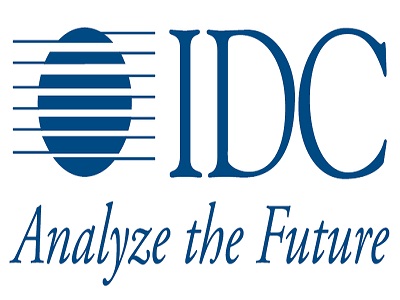E-Business
Top 10 Predictions for IT in 2014

International Data Corporation (IDC) during the week offered the first of its annual predictions for the coming year in the information and communications technology (ICT) industry.
IDC’s predictions for 2014 were heavily influenced by the 3rd Platform, the industry’s emerging platform for growth and innovation built on the technology pillars of mobile computing, cloud services, big data and analytics, and social networking.
DC’s predictions for 2014, presented by Gens in a Web conference, include the following:
Worldwide IT spending will grow 5% year over year to $2.1 trillion in 2014. Spending will be driven by 3rd Platform technologies, which will grow 15% year over year and capture 89% of IT spending growth. Sales of smartphones and tablets will continue at a torrid pace while outlays for servers, storage, networks, software, and services will fare better than in 2013. The PC market will remain under stress, with worldwide revenues down -6% year over year.
Emerging markets will return to double-digit growth of 10%, driving nearly $740 billion or 35% of worldwide IT revenues and, for the first time, more than 60% of worldwide IT spending growth. In the BRIC countries, IT spending will grow by 13% year over year, led by an economic recovery in China.
In dollar terms, China’s IT spending growth will match that of the United States, even though the Chinese market is only one third the size of the U.S. market. Elsewhere, emerging market growth will be uneven, ushering in the beginning of a new “Post-BRIC” era.
Within the 3rd Platform, value will start to migrate “up the stack”, from infrastructure as a service (IaaS) to platform as a service (PaaS) and from generic PaaS to data-optimized PaaS.
The latter will be most evident as Amazon Web Services rolls out an avalanche of platform-as-a-service offerings for developers and higher value services for businesses.
This will force incumbent IT suppliers – the companies that won market leadership in the 2nd Platform era – to urgently reconfigure themselves to fight for position in the 3rd Platform marketplace.
Joining them in the fight will be Google, which will realize it is at risk of being boxed out of a market where it should be vying for leadership.
The mobile device onslaught will continue in 2014 with sales of tablets growing by 18% and smartphones by 12%.
The Android community, led by Samsung, will maintain its volume advantage over Apple, while Apple will hold onto its value edge with higher average selling prices and an established ecosystem of apps.
But Google Play (Android) app downloads and revenues are making dramatic gains and the “app ecosystem value gap” will be significantly narrowed in 2014.
And the clock will be ticking louder for Microsoft, which needs to quickly double mobile developer interest in Windows.
Cloud spending, including cloud services and the technology to enable these services, will surge by 25% in 2014, reaching over $100 billion.
IDC expects to see a dramatic increase in the number of datacenters as cloud players race to achieve global scale.
This will be accompanied by a similar expansion in the variety of workload-specialized cloud infrastructure services, leading to new forms of differentiation among cloud service providers.
Finally, a pitched battle will be joined for the developers that can create the cloud-based applications and solutions that will fuel the market’s growth.
Spending on big data technologies and services will grow by 30% in 2014, surpassing $14 billion as demand for big data analytics skills continues to outstrip supply. Here the race will be on to develop “data-optimized cloud platforms”, capable of leveraging high volumes of data and/or real-time data streams. Value-added content providers and data brokers will proliferate as enterprises (and developers) look for interesting data sources as well as applications that help them to understand their customers, products, and the markets in which they exist.
Social technologies will become increasingly integrated into existing enterprise applications over the next 12-18 months. In addition to being a strategic component in virtually all customer engagement and marketing strategies, data from social applications will feed the product and service development process. IDC expects enterprise social networks will become increasingly available as standard offerings from cloud services providers.
This will enable enterprises to further embed social into the workflow, rather than having a separate “social layer.”
Datacenters represent the physical foundation underneath the cloud, and are thus a crucial component of the 3rd Platform.
As cloud-dedicated datacenters grow in number and importance, the market for server, storage, and networking components will increasingly be driven by cloud service providers, who have traditionally favored highly componentized and commoditized designs.
The incumbent IT hardware vendors, who have struggled to sell into this market, will be forced to adopt a “cloud-first” strategy, designing new innovations for initial release and widespread adoption in cloud service provider datacenters.
The 3rd Platform will deliver the next generation of competitive advantage apps and services that will significantly disrupt market leaders in virtually every industry.
A key to competing in these disrupted and reinvented industries will be to create industry-focused innovation platforms (like GE’s Predix) that attract and enable large communities of innovators – dozens to hundreds will emerge in the next several years.
IDC predicts that most of these industry platform players will not reinvent the cloud underpinnings they need, but will build on top Amazon, Microsoft, IBM, Salesforce, and others’ platforms. In 2014, it will be critically important for these IT leaders to find these emerging industry platform players and win their business.
Finally, the 3rd Platform will continue to expand beyond smartphones, tablets, and PCs in 2014 to the Internet of Things (IoT).
With IoT momentum building in 2014, IDC expects to see new industry partnerships to emerge as traditional IT vendors accelerate their partnerships with global telecom service providers and semiconductor vendors to create integrated offerings in the consumer electronics and connected device spaces. This kind of collaboration and coordination will be necessary to reach the 30 billion autonomously connected end points and $8.9 trillion in revenues that IDC believes the IoT will generate by 2020.
—
E-Business
Human Hacking: When Cyber Criminals Target You

By Nancy Werteen
When you get anti-hacking advice, you’ve probably heard “Don’t use a simple password,” or “Don’t plug in that USB you found on the ground.”

But there’s one form of hacking that doesn’t always require a computer, and it costs businesses about 4.88 million dollars a year.
Modern hackers aren’t trying to get into your computer; they’re trying to get into you.
“They’ll try to learn about you a little bit, and they’ll try to use that information against you to try to get you to complete some action, maybe to send somebody some money,” said Kevin Moran, PhD, Assistant Professor of Computer Science, Cyber Security and Privacy Cluster, University of Central Florida.
IBM calls this human hacking, because it exploits human error instead of system error.
“With people just being busy and maybe not very carefully checking some of the emails or the phone calls that they get, can be something unfortunately that people can fall victim to,” said Moran.
Also known as social engineering, this often takes the form of phishing, where the hacker tries to “fish” the information out of you by impersonating family, friends, or even your bank.
There’s also baiting, where the hacker baits you with something of value. Remember the Nigerian prince scam?
That’s a famous example of baiting. There’s also pretexting, where the hacker will claim the victim has already been hacked, and that the hacker can fix it if you just send over your passwords. So, what can you do?
“Just as a rule of thumb, instead of clicking on links and emails, just go to the website yourself. And that will prevent, a lot of these types of attacks from happening,” explained Moran.
Phishing can take many forms.
Spear phishing targets people with access to confidential information, often to get access into an entire business, and whale phishing targets CEOs or political figures.
Search engine phishing is when hackers create fake websites promising services or goods you’ll never receive.
Angler phishing is when hackers create fake social media accounts impersonating famous people or companies.
Finally, vishing and smishing is phishing done through phone calls and texts respectively.
E-Business
FG Enrolls 59,786 Inmates on NIN Platform

Federal government has said that it has successfully captured 59,786 inmates, representing approximately 74 percent of the total prison population into the National Identity Number (NIN) database.

This figure is based on a total of 80,879 inmates across 256 custodial centres across the country.
Abubakar Umar, spokesman, Nigerian Correctional Service (NCoS), Deputy Controller of Corrections, who made this disclosure in a statement issued on Sunday in Abuja, dismissed recent media reports alleging that the NIN registration had yet to begin in custodial centres.
Umar described such report as misleading, inaccurate, and not representative of the current situation.
According to Umar, the NIN registration exercise within the correctional facilities was ongoing and has achieved substantial progress.
He credited the achievement to collaboration between the NCoS and the National Identity Management Commission (NIMC), which has enabled successful enrollment of majority of inmates into the national identity database.
According to him, “As of June 7, 2025, a total of 59,786 inmates, roughly 74 percent cent of the total inmate population have been captured on the NIMC platform,” Umar said.
“Efforts are ongoing to register the remaining inmates, and necessary mechanisms have been established to ensure the seamless completion of the process.”
He emphasised that the assertion that NIN registration has not started in custodial centres was factually incorrect and overlooks the extensive work already carried out.
The Service reaffirmed its commitment to integrating all inmates into national data systems, including NIN registration, as part of broader efforts to support rehabilitation, reintegration, and digital inclusion for individuals in custody.
Umar also urged media outlets to confirm their information with appropriate authorities before publication to prevent the spread of misinformation that could undermine the Service’s progress and public understanding.
E-Business
NIMC Denies Blocking Police Commission from Verification Server

National Identity Management Commission (NIMC) has clarified that all its verification service platforms remain fully functional and accessible to all authorized partners, including security agencies.

Abisoye Coker-Odusote, DG, NIMC
In a statement on Thursday, the Commission firmly denied claims that it had denied the Police Service Commission (PSC) access to its verification server.
Dr. Kayode Adegoke, head of Corporate Communications, NIMC, described the reported “inability of the Police Service Commission to access the NIMC verification server” as misleading and inaccurate.
He suggested that any challenges faced by the PSC may be due to internal issues within the commission itself, not from NIMC’s end.
The statement reads: “To set the record straight, the NIMC granted verification access to all Nigerian Police formations for the verification of the National Identification Number (NIN). The NPF, PSC and other security agencies have been enjoying uninterrupted verification services for over five years.
“NIMC has provided top-notch verification services for recruitment into the Nigeria Police Force, as conducted by the PSC and at no time have there been any complaints or issues regarding NIN Verification by the NPF or PSC.
“The Commission has a robust and harmonious working relationship with the Nigerian Police Force and the Police Service Commission. The Information Communications and Technology (ICT) department of the Nigeria Police Force is actively managing the long-standing verification and integration service between the NIMC and all Nigeria Police formations.Entertainment tourism packages
“NIMC will continue to provide flawless verification services for the purpose of recruitment, security mapping, cybercrime control, and any other security matters.
“The framework by which NIMC provides services to the security agencies was recently restructured for standardization and effective implementation, following consultation with the Office of the National Security Adviser, and NPF has confirmed the verification services have continued to be available. We therefore believe that any service interruption experienced by PSC may be due to internal matters.
“NIMC is committed to providing excellent verification services to the PSC, NPF and all its partners but the terms and conditions inherent must be adhered to for uninterrupted flow of service.”

 E-Financial1 day ago
E-Financial1 day agoCyber Crime: Hackers to Hold Secret Conference 3.0 July 25

 General News1 day ago
General News1 day agoWema Bank Workers, Others Arraigned over Alleged N8.9Bn Cybercrime

 Telecom1 day ago
Telecom1 day agoGaps on Phone Number Recycling Fuel Identity Theft, Data Breaches- ICIR

 E-Financial1 day ago
E-Financial1 day agoSEC Flags ‘Punisher Coin’ As High-Risk Scheme

 General News1 day ago
General News1 day agoMusic Stars, Comedians Light Up “Evening with Glo” in Ijebu Ode

 E-Business1 day ago
E-Business1 day agoFG Enrolls 59,786 Inmates on NIN Platform

 News7 hours ago
News7 hours agoAAAN Congratulates Steve Babaeko, X3M Ideas on Financial Times Recognition

 Telecom7 hours ago
Telecom7 hours agoTelcos Hit by Major Outages across Lagos, Enugu, Others


























